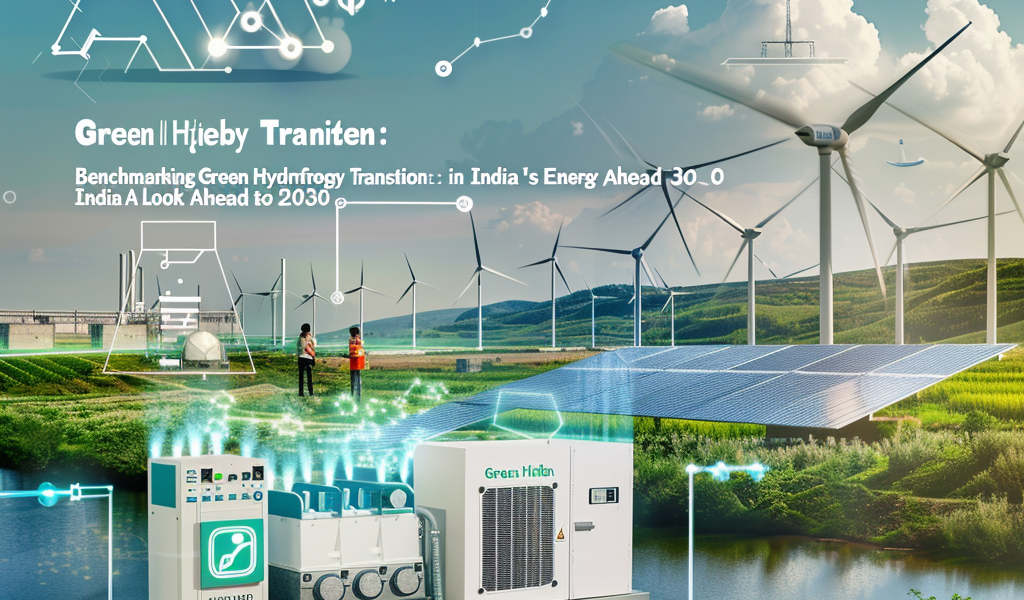Benchmarking Green Hydrogen in India’s Energy Transition: A Look Ahead to 2030
As the world pivots towards sustainable energy solutions, green hydrogen emerges as a crucial player in India’s energy transition. This innovative energy source is poised to decarbonize challenging sectors, including fertilizer production, steel manufacturing, and specific transportation modes such as shipping and long-distance freight. This article delves into the economic landscape of green hydrogen in India, particularly focusing on projections for 2030.
Green hydrogen is produced through the electrolysis of water, utilizing renewable energy sources. The production process links closely to the cost and availability of renewable energy generation, which is assessed through capacity utilization factors (CUFs). This analysis also addresses the potential premium associated with green hydrogen when compared to the fossil fuel energy equivalents across various applications.
Currently, India’s hydrogen production is largely derived from fossil fuels, specifically through the steam reforming of natural gas, resulting in approximately 6 million tonnes per annum (Mtpa) of grey hydrogen. This hydrogen primarily serves the fertilizer and oil refining industries. However, the Indian government has set an ambitious target to ramp up domestic green hydrogen production to 5 Mtpa by 2030, a significant increase from the current production levels.
Despite optimistic forecasts, achieving the much-cited target of $1 per kilogram for green hydrogen by 2030 appears challenging. Presently, the production cost of green hydrogen ranges between $4 and $6 per kilogram. Based on future projections regarding electrolyzer efficiency, it is estimated that the input cost of renewable energy for green hydrogen production will hover around $1.4 per kilogram by 2030. This figure accounts for rupee depreciation and constitutes about two-thirds of the total production cost.
In addition to renewable energy costs, other significant factors contributing to the overall production expenses include the capital expenditure (capex) associated with electrolysis equipment, operation and maintenance (O&M) costs, and the procurement of pure water. The National Green Hydrogen Mission initiated by the Indian government aims to provide incentives that could potentially reduce the total production costs to under $2 per kilogram. These incentives may include waivers on inter-state renewable energy transmission charges and capital subsidies of up to $0.55 per kilogram for green hydrogen production.
To facilitate a reduction in green hydrogen production costs, advancements in electrolyzer technology are essential. The development of cheaper and more efficient electrolysis systems will play a pivotal role in making green hydrogen more economically viable. Furthermore, achieving high electrolyzer utilization rates is crucial for expediting the return on investment for electrolyzer capital expenditures. This necessitates a consistent supply of renewable energy.
There exists a clear trade-off between the cost of renewable energy and CUF. The most cost-effective renewable energy supply is expected to come from hybrid power plants that combine wind and solar energy. These plants typically have an oversized total renewable energy generation capacity, exceeding their nameplate capacity. Such setups are designed to ensure a steady supply of energy, thereby enhancing the overall efficiency of green hydrogen production.
As India navigates its path towards a greener future, the role of green hydrogen will be critical in meeting the nation’s energy needs while addressing environmental concerns. The ongoing developments in technology, coupled with supportive government policies, are expected to shape the trajectory of green hydrogen production in the coming years.
In conclusion, the journey towards establishing a robust green hydrogen economy in India is fraught with challenges, yet it holds immense potential. With strategic investments and technological advancements, India can position itself as a leader in green hydrogen production, contributing significantly to global efforts in combating climate change and fostering sustainable energy practices.





